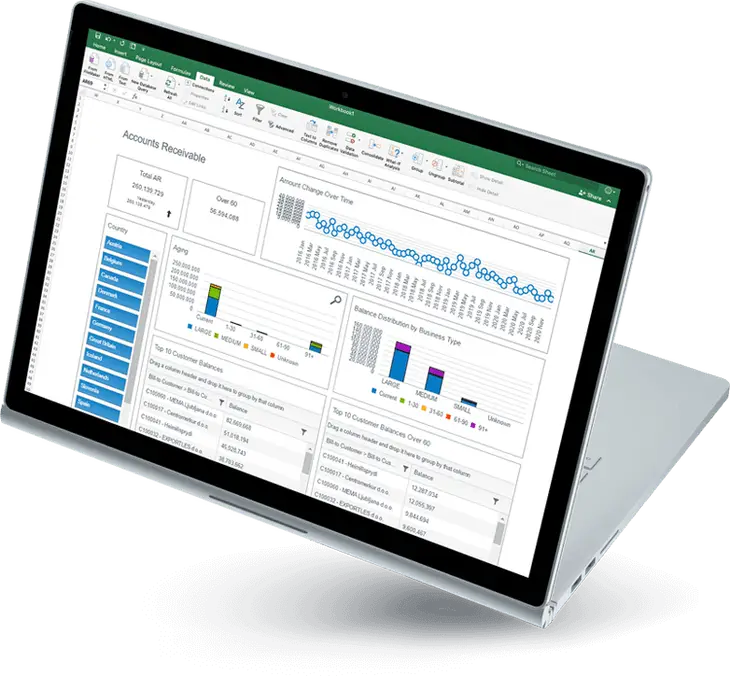
How can IT be removed from Financial Reporting?
How can IT be removed from Financial Reporting?

- Global Data 365
Financial reporting plays a crucial role in providing real-time insights, especially in crisis scenarios. If you are asked to present up-to-the-minute information on cash flow, chances are you will create a worst-case scenario based on some new assumptions, such as a 20% decrease in sales and a 15-day delay in collections. Even though you’ve generated hundreds of cash flow reports, you’ve never been asked for this exact version before. It requires some additional details, such as a sales pipeline review and improvements to the aging study. Almost anyone who has ever worked in finance or accounting has encountered a situation like this at some stage. With the coronavirus outbreak, business leaders couldn’t bear to have inefficiencies slowing their access to the information as they tried to evaluate the situation and react quickly.
Eradicate the Chokepoints
To produce or change system reports, the finance and accounting department has mainly focused on IT experts or costly outside consultants. Many accounting and ERP frameworks provide report design tools that are inflexible and require a steep learning curve. This raises a variety of difficulties. For starters, it establishes a reliance on a third-party department. Cross-team dependencies are common in most organizations, but when one department’s goals vary from those of others, conflict or chokepoints occur, preventing work from being accomplished quickly and efficiently.
When a particular department is overburdened with conflicting interests, problems may occur. Many IT divisions were preoccupied with tasks related to the enablement of remote staff as the coronavirus crisis unfolded, for example. This occurred at precisely the moment when C-level executives required the most urgent access to financial data and analysis. Businesses can try to remove these forms of dependencies as much as possible as a long-term strategy, so those cross-functional collaboration strategies will concentrate on areas where teamwork and diverse viewpoints add real value.
Enhance Flexibility
The second issue with conventional reporting tools is that they often lack the versatility that finance and accounting users need. Because of its immense strength and versatility, most F&O users tend to work in Excel. Excel is an excellent tool for manipulating, analyzing, and visualizing data. Almost every finance expert knows how to make good use of it. The finance and accounting department will kill two birds with one stone by allowing real-time data from various software systems to be accessed directly inside Excel.
The second issue with conventional reporting tools is that they often lack the versatility that finance and accounting users need. Because of its immense strength and versatility, most F&O users tend to work in Excel. Excel is an excellent tool for manipulating, analyzing, and visualizing data. Almost every finance expert knows how to make good use of it. The finance and accounting department will kill two birds with one stone by allowing real-time data from various software systems to be accessed directly inside Excel.
For starters, they may reduce their reliance on technology. Second, they will enable finance and accounting professionals to create reports and conduct analyses using a single, strong, and familiar tool. Many businesses have found interest in implementing web-based dashboards so that leaders around the enterprise can have real-time access to a shared collection of business metrics. A few of these web-based dashboard platforms follow a common user-empowerment philosophy, allowing the finance department to set the agenda and implement a strategy for carrying out corporate dashboards without relying on the IT department in the long run.
Eliminate Errors
When finance takes over the reporting role, it will be able to address another issue that most F&O teams are familiar with. Traditionally, manually copying and pasting data from ERP, CRM, and other internal systems into Excel was needed for reporting and analysis. It is a time-consuming procedure that is prone to introducing errors into the reporting process. As data source formats alter (for example, when a new row is added to a General Ledger report), data may be pasted incorrectly into a pre-defined Excel template. Expert spreadsheet users will also incorporate error-checking algorithms or workarounds to avoid incorrect results in this case, but such methods are far from foolproof.
Another major disadvantage of the copy/paste process is that it is time-consuming. It generates reports that are based on out-of-date data. Data extracted from a source system, such as ERP, no longer provides an accurate and up-to-date picture of what’s happening in the industry. Data must be updated, and then copy/paste procedure must be repeated to review reports. Building a reporting strategy focused on real-time data access is a safer option.
An Alternative Approach
Consider this alternative strategy, in which data is made accessible in real-time by connecting to multiple source networks within the enterprise. Because when the finance department can create reports directly in a familiar method like Excel instead of having to copy and paste data from other systems, it can concentrate on what it does best: compiling and evaluating data to make better business decisions.
The need to refresh content won’t arise since this system enables real-time access to information. Direct links to source systems such as ERP or CRM may be used to automatically refresh data. With less effort, less cross-team dependency, and a lower risk of mistakes, everybody gets a real-time view of what’s going on in the company.
All these advantages are open to companies using several off-the-shelf ERP, CRM, and other software systems due to Global Data 365‘s powerful reporting tools. Reports can be created, updated, and distributed securely within the organization. Users only have access to information they can see due to built-in data protection. The year 2021 will see a renewed emphasis on software automation tools. Automation of reporting and related tasks is a reasonable first step for companies looking to improve efficiencies by doing more with less, and remote workers aim to collaborate easily and efficiently with other team members.
Get 30 days free license for Jet Reports
Search Blog
Related Resources


How to Increase Transparency in your Finance Processes



